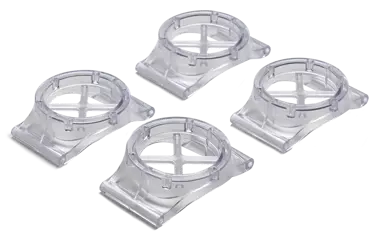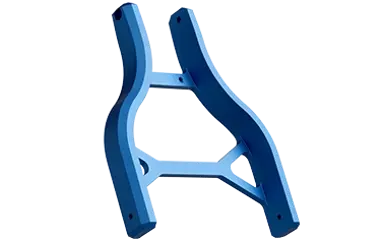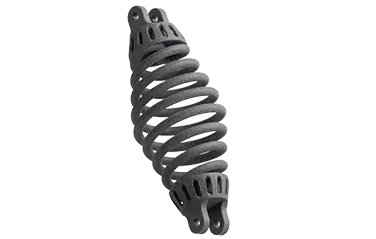Talk with Our Team
Hello! We just need a few bits of information then a manufacturing expert will reach out to you directly to see we how can partner on a future production project.
Thank you! We've received your request and a member of our team will reach out shortly.
Consumer Electronics Manufacturing for Prototyping and Production
Beat competition to market with rapid prototyping and on-demand production
Certification + Compliance
ISO 9001:2015 | ISO 13485:2016 | AS9100D | ITAR





How Do Consumer and Computer Electronic Companies Use Protolabs?
Rapid Prototyping
Take advantage of design for manufacturability (DFM) feedback in our instant quotes to make adjustments to part design before any manufacturing begins, then navigate quickly through early- and late-stage prototyping with ease.
Low-Volume Production
Ramp up production to get quality end-use parts to market fast and use batch production to reduce financial risk with no minimum order quantity (MOQ) and low total cost of ownership (TCO).
Mass Production
Order quantities up to 1 million+ parts with volume pricing built to fit your budget.
End-of-Life Production
Reduce your financial risk and warehousing costs during end of product life by ordering low volumes of product parts just in time.
Range of Materials
Choose from hundreds of production-grade plastics through injection molding along with more than 40 different metal materials for end-use components available through our 3D printing, machining, and sheet metal services.
| We are the fastest and most comprehensive digital manufacturer in the industry with more than 25 years of experience developing products for innovative consumer electronics companies around the world. | 96% of Fortune 500 Consumer Electronics Companies Served |
700 Million Parts Manufactured |
300,000 Customers Served |
Full Production Support Team
| We have a team of manufacturing experts working behind the scenes to fulfill your production order—we manage the entire process and keep you updated along the way. |

Account Manager
A dedicated account manager provides support, including assistance with platform and file uploads.

Applications Engineers
Expert CAD solutions and cost-reduction strategies tailored by in-house applications engineers to optimize your designs.

Logistics
Seamless logistics fulfillment and efficiency optimization from experienced operations specialists.

Quality Control
Our expert on-site quality control teams ensure your parts meet your expectations and exact specifications.
Manufacturing Services for Consumer Electronic Products
Injection Molding
Get affordable, high-quality molded parts and bridge tooling within days. With our free moldability consultation, the design and molding process is rapidly accelerated to save you time and money.
- Low-volume molding up to 100,000+ parts with volume pricing available—no MOQ required
- 100+ plastic, elastomeric, and silicone rubber materials
- Automated CMM for fast, in-house quality documentation
CNC Machining
Leverage the same speed, precision, and reliability in machining that you’re accustomed to at Protolabs but unlock advanced machining capabilities like tighter tolerances and volume pricing through our manufacturing network.
- Machined parts in as fast as 1 day with optional plating and anodizing in as fast as 4 days
- Cost-efficient machined parts at higher volumes
- Tolerances down to ±0.001 in. (0.020mm) through our digital network
3D Printing
Want quality parts and additive expertise at a single 3D printing source? Choose from seven different additive manufacturing technologies for cost-effective prototyping and highly precise, repeatable production parts.
- Additive technologies include metal 3D printing, SLA, SLS, FDM, and more
- 30 plastic and metal materials in a range of finishes
- 25 years of additive manufacturing expertise
Sheet Metal Fabrication
From easy quoting to quick-turn production and finishing options, get up to 500 quality sheet metal parts in your hands in days from a single supplier.
- Instant quotes with interactive manufacturability feedback
- Six sheet metal materials including aluminum, stainless steel, steel, brass, and copper
- Finishing options from welding and hardware insertion to powder coating and silk screening

Quality Measures for Consumer Electronics
Our industry-standard procedures and certifications guarantee quality and regulatory compliance.
| CMM inspection report | First Article Inspection (FAI) |
| Dimensional Inspection Report (DIR) | PPAP |
| Material Certificates + Certificate of Analysis | Conflict Minerals Reporting |
| REACH + RoHS Certificates | Prop65 |
| Industry Certifications: ISO 9001 and AS 9100 | Certificate of Conformance (CoC) |
| Industry Certifications (Protolabs Network): ISO 13485, ISO 14001, ISO 45001, and ISO TS16949 |
What Materials Work Best for Consumer and Computer Electronic Components?

ABS
This reliable thermoplastic is widely used in industries like consumer electronics. It brings general-purpose performance for parts like electronics enclosures and handheld devices, and is also relatively inexpensive.

Aluminum
This material can be machined or formed through sheet metal fabrication to create housings, brackets, or other metal parts that need high strength and low weight are required.
Elastomers
Available in both 3D printing and injection molding, choose from several elastomeric materials for parts that need impact resistance or flexibility. Overmolding is also available for components and products with ergonomic grips, buttons, or handles.

Advanced Photopolymers
When your application requires greater mechanical properties for end use parts, we provide several advanced photopolymer options offering high strength, good impact resistance and excellent surface finishes.

Polycarbonate
This strong and extremely impact resistant thermoplastic has a low shrink and good dimensional stability. It’s a transparent plastic that is available in optically clear grades, which works well for transparent covers and housings.
Common Consumer Electronics Applications
We have several capabilities within our manufacturing services catered to the consumer electronic industry. Here are a few applications we frequently see.
|
|

Breaking New Ground in Transducer Technology
Sonos, the renowned leader in home audio innovation, has redefined sound with their latest product, Arc Ultra—the first consumer device to incorporate the groundbreaking Sound Motion™ technology. The achievement means a monumental leap in audio performance, delivering twice the bass of its predecessor while creating a slimmer, more refined design.
Related Resources














